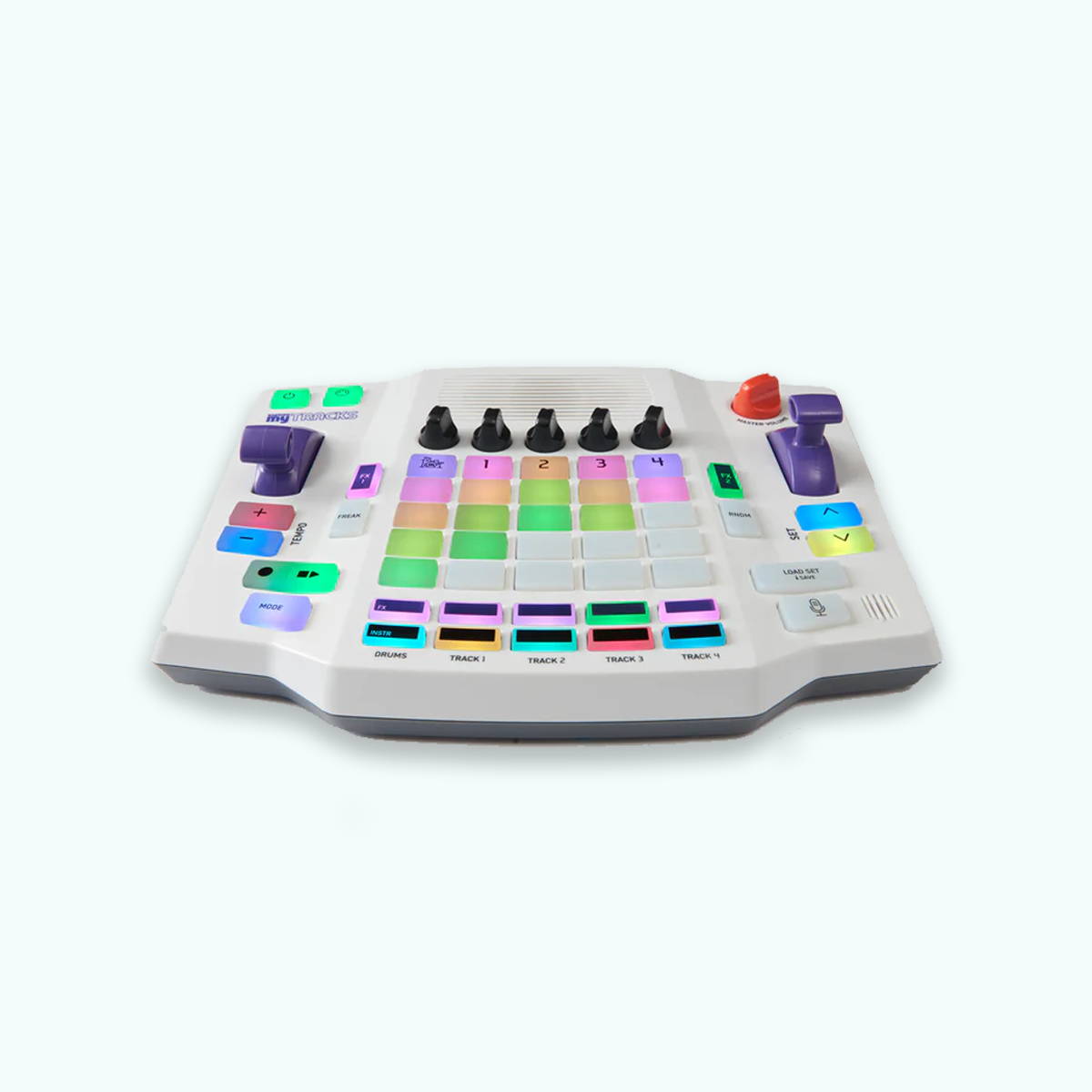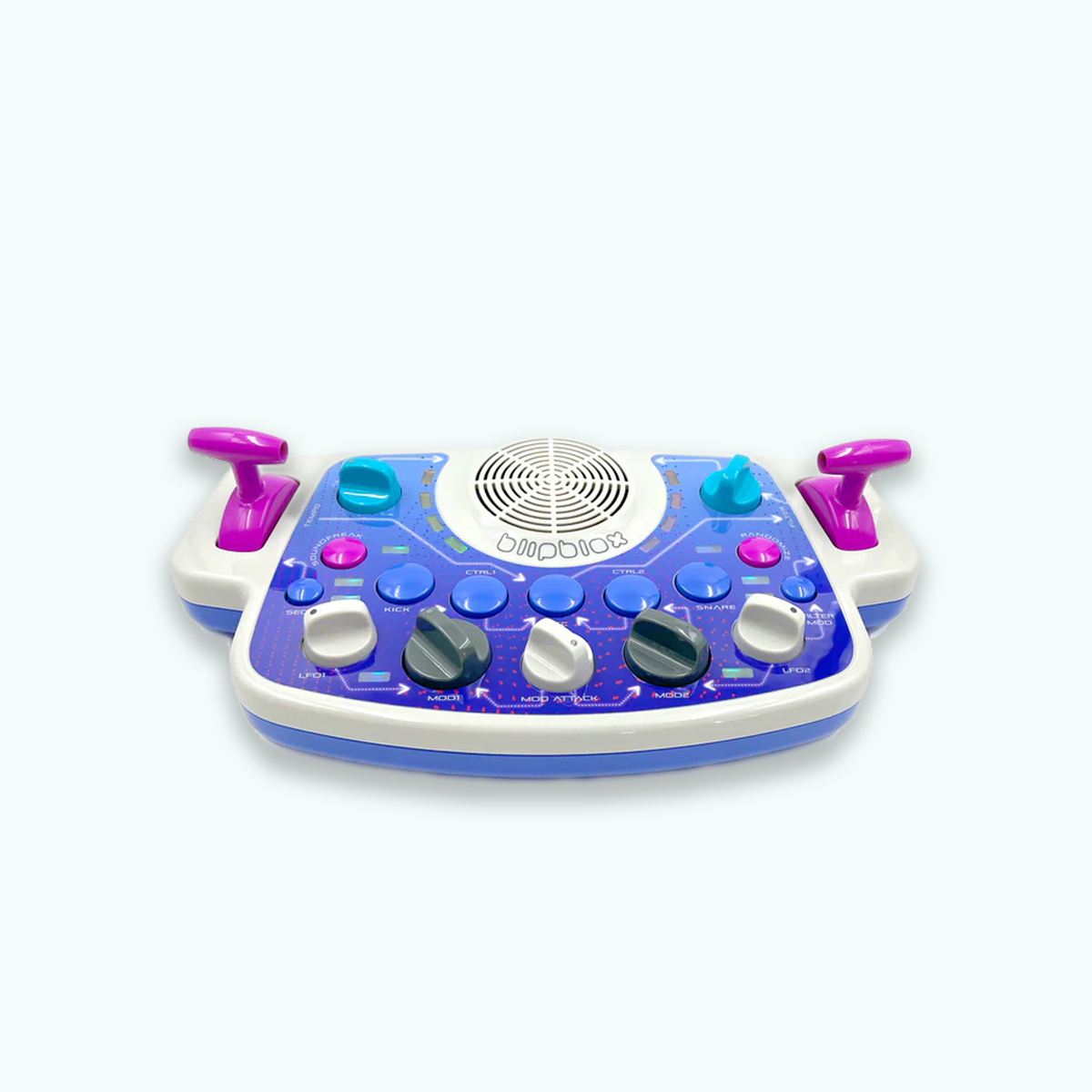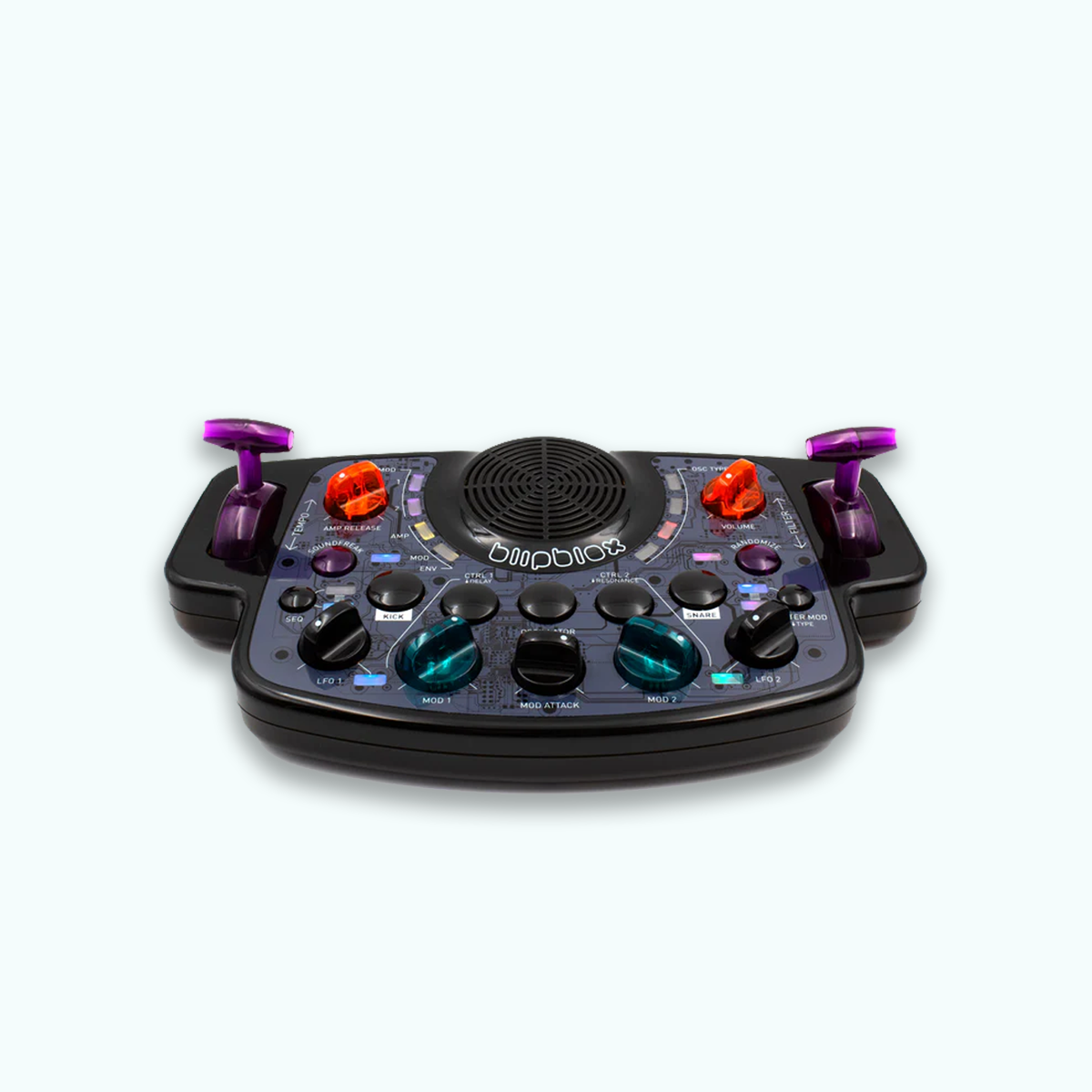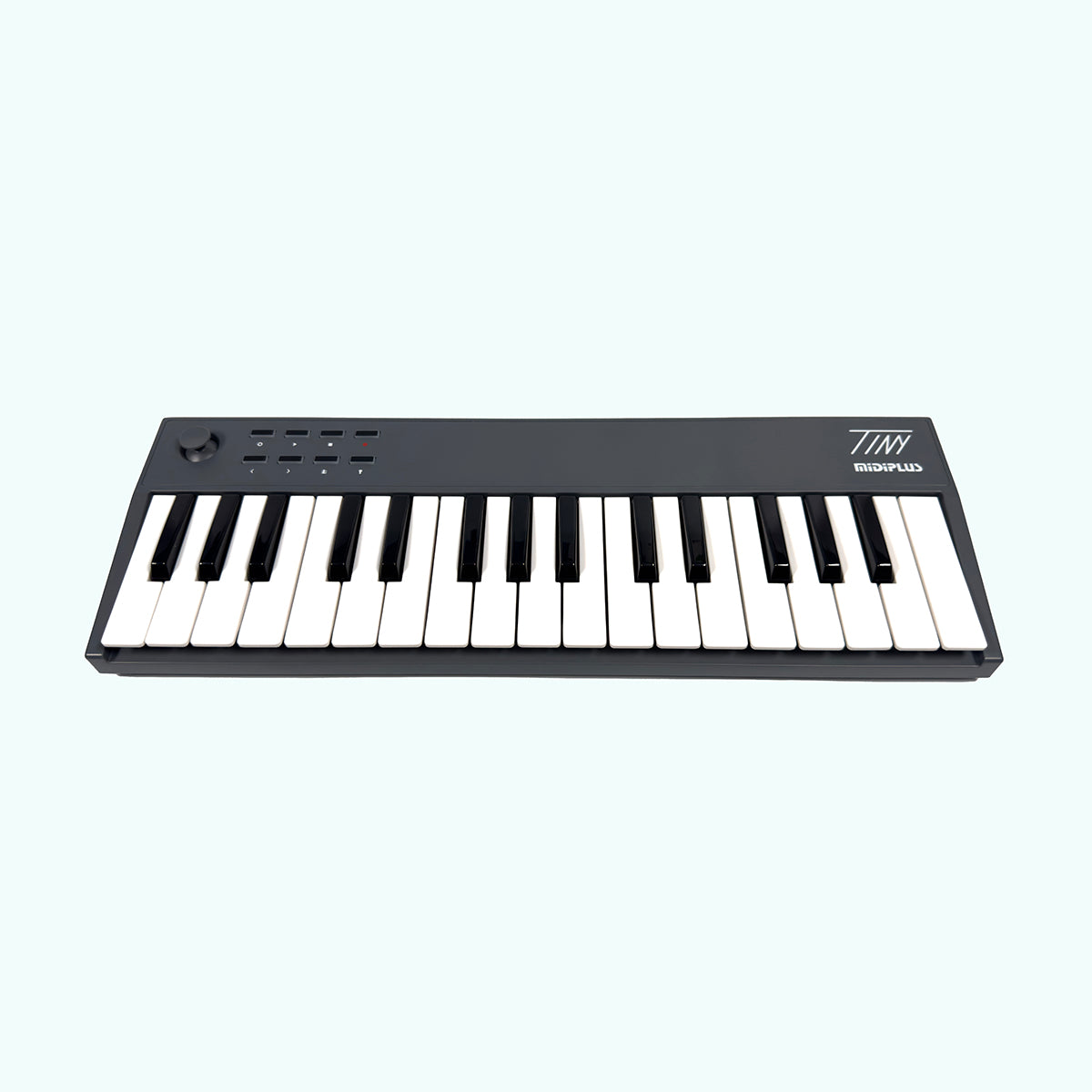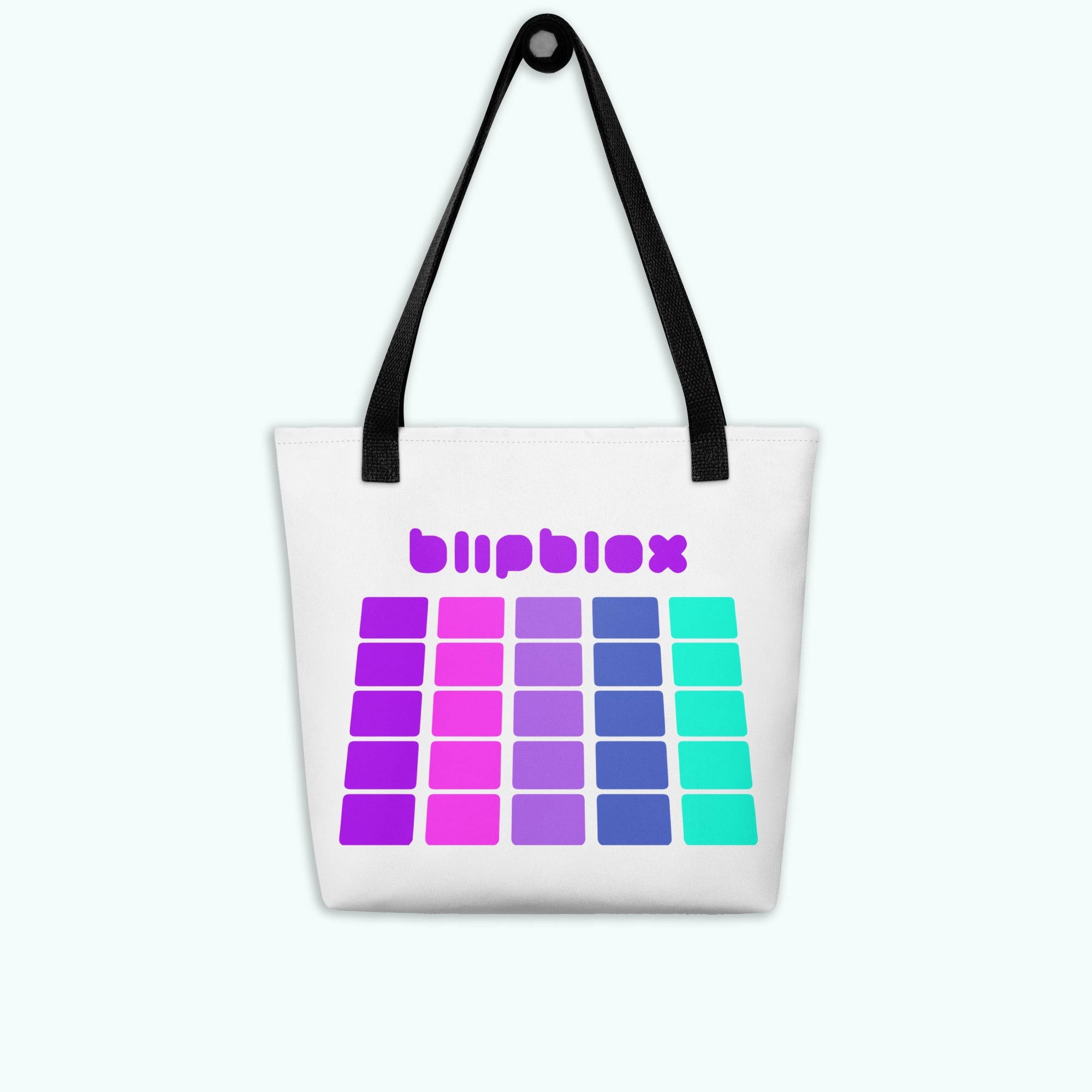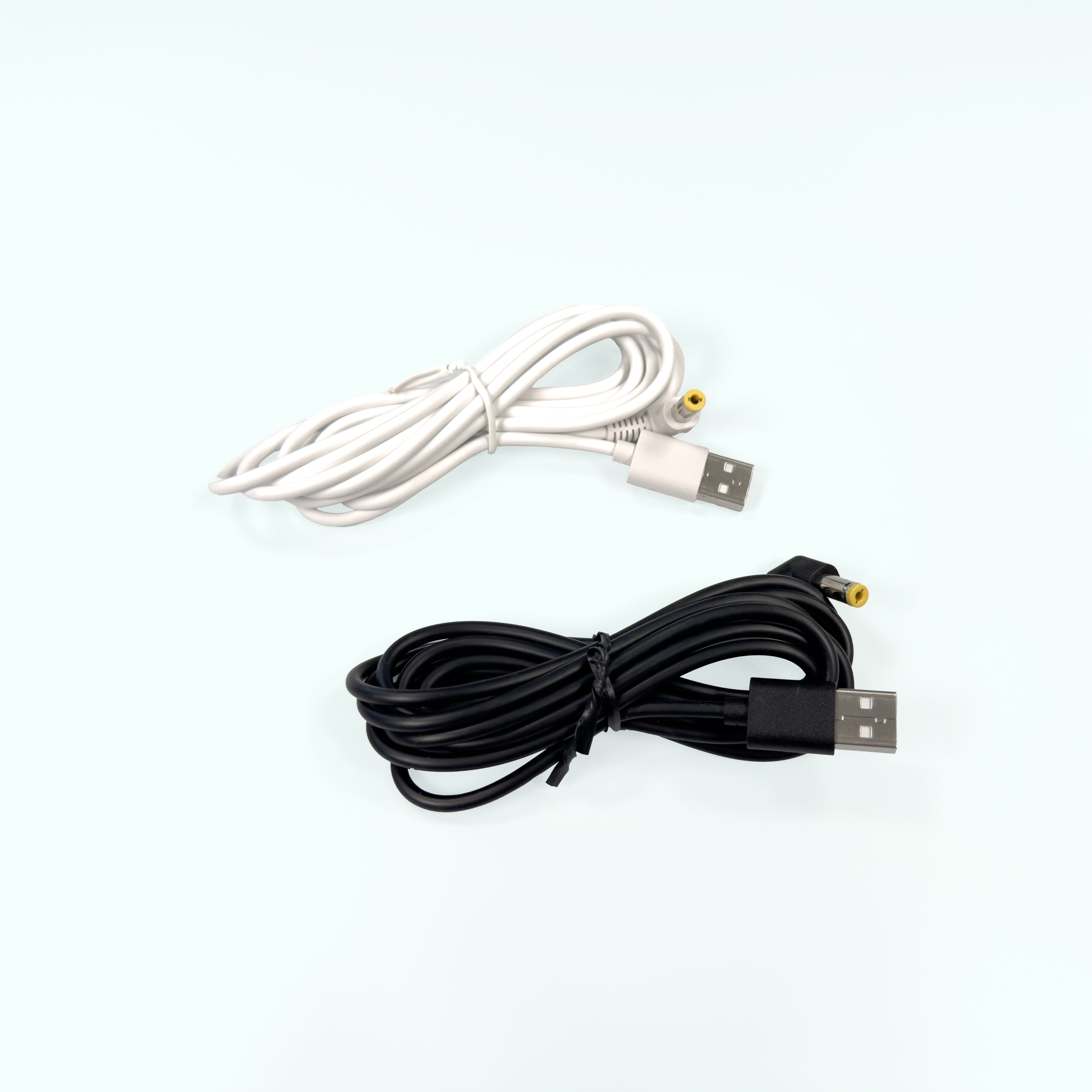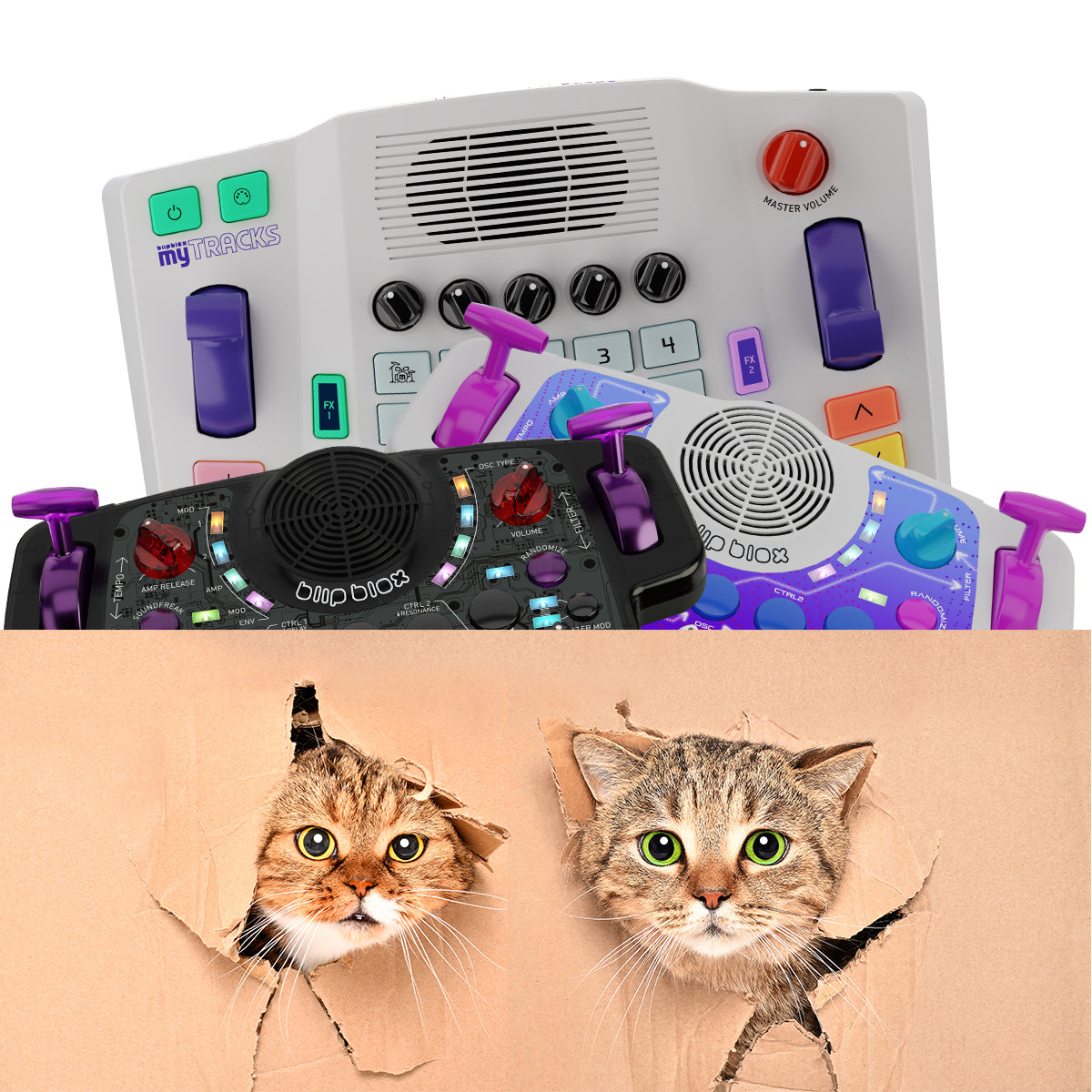Blipblox Origin Story

Back in 2014, Blipblox Creator and Electrical Engineer, Troy Sheets started tinkering with ways to produce synthesized sound from low cost computer chips. Using an off-the-shelf microcontroller development board, Troy wrote the code to make a single sawtooth sound wave. From that early code grew the software that would power the Blipblox, and eventually the Blipblox After Dark.
On the hardware side, Troy wired in knobs (the board already had buttons) and the controls started to take shape. The next step was to design a PCB board that included LEDs, MIDI, buttons, knobs, and an audio amplifier. 3D printing was used to experiment with various product designs.
By 2016, Playtime Engineering was ready to take a huge leap of faith by enlisting one of the world’s top music device product designers, Axel Hartmann. Working closely with Axel, we created the Blipblox’s sleek, fun, child-safe design. The levers were originally going to be sliders, but we could not figure out how to make the sliders caps child safe. So, borrowing the concept of a mod wheel, we created the Blipblox’s signature control levers.
After several years of hard work, we are extremely happy with the final product.
Today, the Blipblox family of devices remain the only synthesizers on the market fully certified to international child safety standards for ages 3 and up.
After finding success with a synthesizer made for kids, Troy started researching an even more ambitions project, creating an entire music studio simple enough for anyone to use. Inspired by grooveboxes and MPC devices, the Blipblox myTRACKS aims to bring even more powerful music production capabilities to the music-as-fun market the Blipblox created.
We are grateful for the thousands of Blipblox fans, both young and young at heart, who continue to enjoy our music devices.
